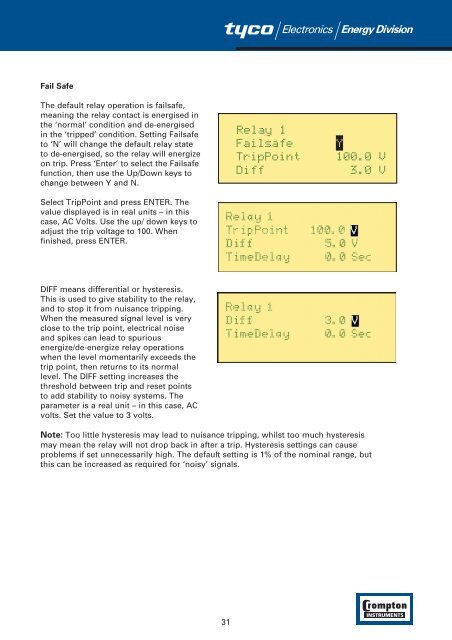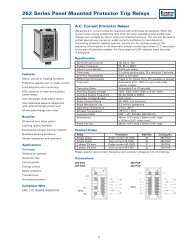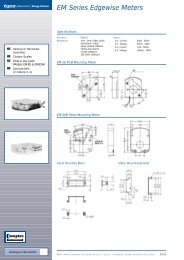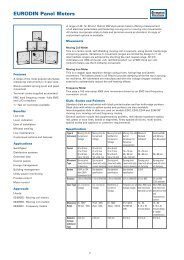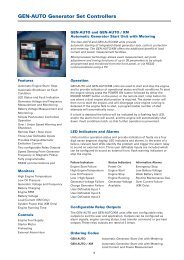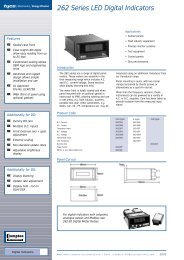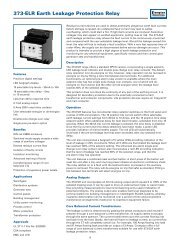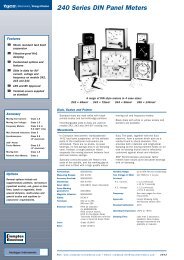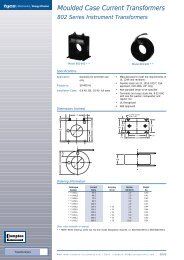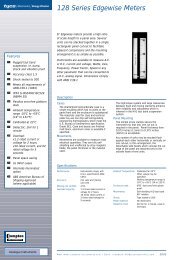Installation and Operating Manual System Protection Relay Energy ...
Installation and Operating Manual System Protection Relay Energy ...
Installation and Operating Manual System Protection Relay Energy ...
You also want an ePaper? Increase the reach of your titles
YUMPU automatically turns print PDFs into web optimized ePapers that Google loves.
Fail Safe<br />
The default relay operation is failsafe,<br />
meaning the relay contact is energised in<br />
the ‘normal’ condition <strong>and</strong> de-energised<br />
in the ‘tripped’ condition. Setting Failsafe<br />
to ‘N’ will change the default relay state<br />
to de-energised, so the relay will energize<br />
on trip. Press ‘Enter’ to select the Failsafe<br />
function, then use the Up/Down keys to<br />
change between Y <strong>and</strong> N.<br />
Select TripPoint <strong>and</strong> press ENTER. The<br />
value displayed is in real units – in this<br />
case, AC Volts. Use the up/ down keys to<br />
adjust the trip voltage to 100. When<br />
finished, press ENTER.<br />
DIFF means differential or hysteresis.<br />
This is used to give stability to the relay,<br />
<strong>and</strong> to stop it from nuisance tripping.<br />
When the measured signal level is very<br />
close to the trip point, electrical noise<br />
<strong>and</strong> spikes can lead to spurious<br />
energize/de-energize relay operations<br />
when the level momentarily exceeds the<br />
trip point, then returns to its normal<br />
level. The DIFF setting increases the<br />
threshold between trip <strong>and</strong> reset points<br />
to add stability to noisy systems. The<br />
parameter is a real unit – in this case, AC<br />
volts. Set the value to 3 volts.<br />
Note: Too little hysteresis may lead to nuisance tripping, whilst too much hysteresis<br />
may mean the relay will not drop back in after a trip. Hysteresis settings can cause<br />
problems if set unnecessarily high. The default setting is 1% of the nominal range, but<br />
this can be increased as required for ‘noisy’ signals.<br />
31


